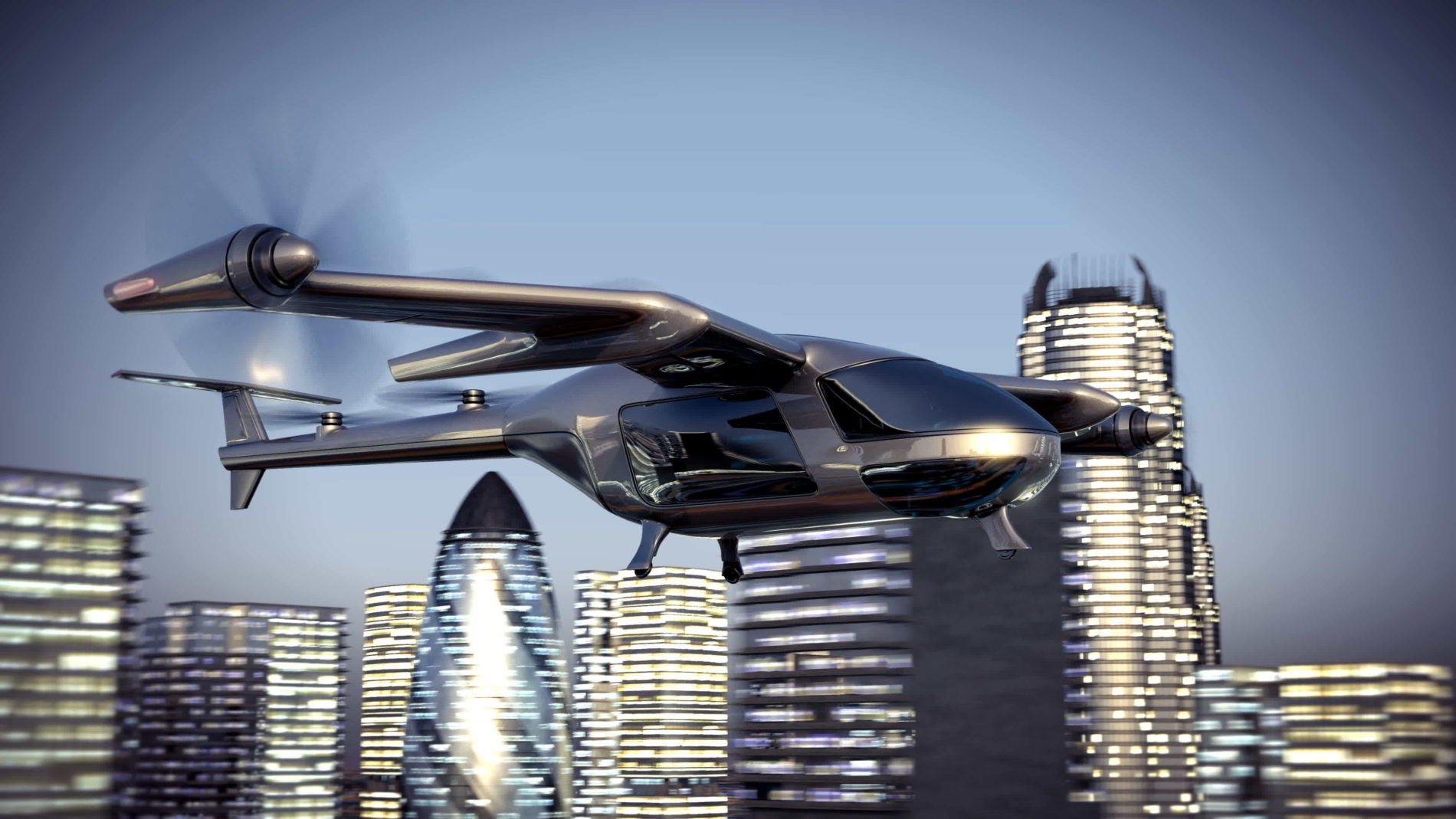
As many commuters will be all too aware, London is currently the most congested city in Europe, with drivers on average spending around 72 hours stuck in traffic every year.
As populations continue to grow, with 68% of the world’s population is expected to live in urban areas by 2050, some in the transport sector are looking to the skies to come up with a solution.
One such project is The Aviary Project, launched to bring together consultancies, vehicle designers, airspace integrators, and government, with the aim of moving closer to the adoption of urban air mobility in the UK. But when could urban air mobility become a reality in UK skies?
UK urban air mobility
There are now around 120 Electric Vertical Take Off and Landing (EVTOL) prototypes in development around the globe, with companies such as Uber investing heavily in what may be the future of urban mobility. The company recently announced a partnership with NASA to launch its own urban air transportation by 2023.
Previously, other countries have been ahead of the UK in this space. But over the last year pace has picked up, with several exiting developments occurring.
At the start of the year, a startup called Autonomous Flight built a prototype passenger drone capable of flying from London to Heathrow Airport in just 12 minutes.
How well do you really know your competitors?
Access the most comprehensive Company Profiles on the market, powered by GlobalData. Save hours of research. Gain competitive edge.

Thank you!
Your download email will arrive shortly
Not ready to buy yet? Download a free sample
We are confident about the unique quality of our Company Profiles. However, we want you to make the most beneficial decision for your business, so we offer a free sample that you can download by submitting the below form
By GlobalDataIn September, British start up Vertical Aerospace built and launched the first EVTOL to take off in the UK, with plans to launch an air taxi service by 2022.
Two experts give their thoughts
Speaking at the Aviary Project launch event, Darrell Swanson, principal consultant at AviaSolutions, believes that electric aviation could transform aviation in the UK by allowing far shorter trips between cities not currently economical using full-sized planes:
“It allows airline operators to service those small markets. Some of the airports in the north are struggling because they can’t get the traffic because there’s not necessarily enough demand, but a ten passenger vehicle might be able to take those people down to London on an economic basis that you can’t currently service. I think this is going to lead to an evolution where trips from 50 to 650-1000 miles depending on the vehicle are going to be taken by these electric aircraft.”
However, a lack of infrastructure means the UK is not quite there yet. Although EVTOLS do not require road infrastructure, landing and recharging pads for drones, as well as vertiports (or vertical airports) must be in place before widespread adoption is possible. One company, Skyports, has already begun buying rooftop space in London in preparation.
Swanson believes that without investment in infrastructure, urban air mobility plans could slow down:
“Airbus described the infrastructure challenge as the secret bottleneck, as without the infrastructure we don’t necessarily get the business models that support the development of the vehicles. They have to work hand-in-hand.”
Swanson believes that there are still several hurdles to adoption in the UK:
“The challenge include battery technology, we’re not quite there yet, but we’re going to get there, certification, it is on the way…the airspace…vertiports, we need a new way of engaging with the stakeholders, and standardisation.”
Target 2022?
Some reports have predicted that urban air mobility could make its way to the UK by 2022. Although Darrell believes it could take a bit longer, he believes that adopting is imminent:
“Early adopters: Dallas Fort Worth is going to be one of the first airports to include it, I’m talking to Munich airport, they’re seriously considering this, and we’re already seeing demonstrated flights in Dubai.
“First wave 2023, that’s when a lot of big OEMs seem to be pushing towards, and then we’ll see our first electric regional flights, strong growth in 2025, and then the begins of maturity at the end of the 20s, possibly going into the 30s.”
A London Assembly meeting earlier this year said that the city will require “planning, transparency and accountability”, but Swanson believes that he city can benefit greatly from the technology:
“It’s about allowing people access to markets in a shorter period of time as possible…it’s really about global cities…the number of global cities wouldn’t necessarily justify the billion dollars of investment in the industry that’s been going on for the last few years. It’s really about the mega regions and corridors. So it’s really about these regions where you have high population densities, where cities are starting to merge together forming these regions and corridors, where electric aviation can really play a role in terms of delivering real service and value.”
Regulatory challenges
The next hurdle, regulation, is another that those in the industry are trying to overcome. The Civil Aviation Authority, which regulates airspace is reportedly working with the drone industry to come up with a legal framework to allow urban drone flights.
However, the things are moving rapidly in the field. Nikhil Sachdeva, senior consultant at Roland Berge, believes that cutting-edge technology has made this possible:
“Two concurrent trends that are all happening together have made this possible. The first of which is electrical propulsion…autonomy is the other trend enabled by the drone revolution. You can enable the entire experience to be more convenient, quicker and ultimately more affordable…finally it’s the purpose-build ecosystem around it.”
He urges that the UK has to keep pace with the speed of innovation to avoid falling behind:
“There’s not dock in the UK yet, so hopefully events like this will help us fix that, to at least have a proposal in. Because the fact is the technologies are not waiting around for the cities to catch up. There’s already UAV technologies that are being developed, and cities will have to keep pace with them if they’re going to capitalise on the opportunities made available by this new type of urban mobility.”







